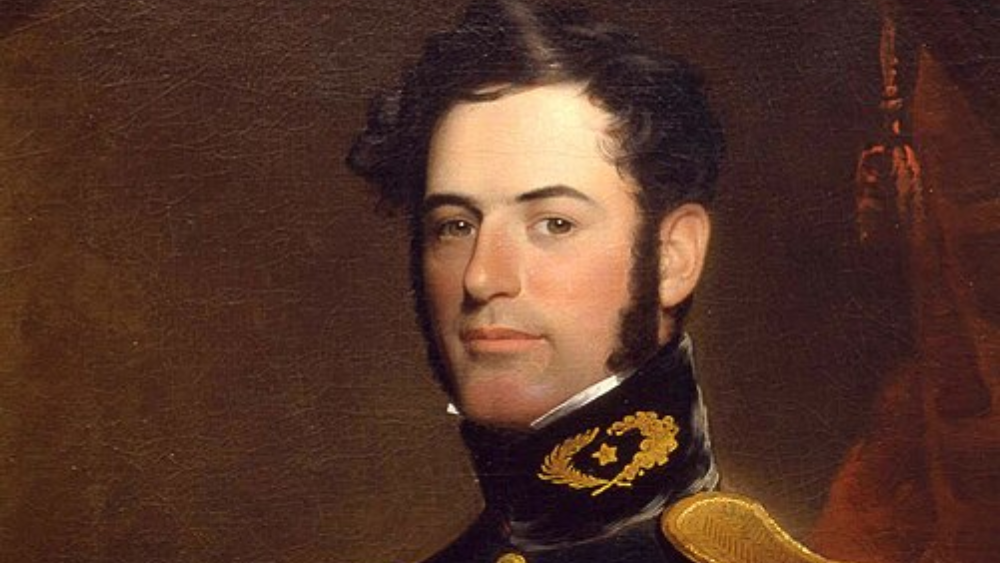Robert Edward Lee served as a Confederate general during the American Civil War. In the latter stages of the conflict, he assumed the role of overall commander of the Confederate States Army. Lee commanded the Army of Northern Virginia, which was regarded as the Confederacy’s most formidable military force, from 1862 until its surrender in 1865. Throughout his tenure, Lee earned recognition for his adept tactical skills.
Early Life and Career
Henry (also known as “Light-horse Harry”) and Ann Hill Carter Lee were the parents of Robert Edward Lee. His uncles and relatives had signed the Declaration of Independence, served in Congress, and held other illustrious positions in addition to his father’s roles as governor of Virginia and a hero of the American Revolution. When Lee’s father left for the West Indies when he was six, he never returned, leaving the family in a stable financial situation.
In 1825, the United States Military Academy at West Point was a university strongly focused on engineering. Robert, of course, complied with all regulations. The Secretary of War nominated candidates for the Academy, and the President appointed them. Six individuals from Virginia, including Robert, were selected. Robert E. Lee enrolled in the United States Military Academy in 1825 and earned the class of 1829’s second-highest degree.
Robert Edward Lee: Academic Journey
His fellow cadets regarded him as the “Marble Model”—a moniker that both expressed jealousy and adoration. Lee cut an imposing figure at just under six feet (1.8 meters) in height, with black hair and dark eyes. Because of his high-class position, he joined the Engineer Corps on July 1, 1829, as a second lieutenant.
Robert started his studies in science in his third year. He would not be enrolling in a mathematics course, but he would keep on tutoring. His main areas of study were physics, natural philosophy, and chemistry. Additionally, he would enroll in a range of military studies classes. Lee would have to attend required dancing courses with the rest of the cadets. He would also be chosen as Corps Adjutant.
Moreover, he spent most of the summer of 1828 with his mother, whose condition was deteriorating. On July 26, 1829, she died with Robert. Robert E. Lee started his last year at the Academy on September 1. He added geology, chemistry, ethics, rhetoric, and practical economics classes to his ongoing military studies.
The first instructions for Brevet 2nd Lieutenant Lee would come shortly. By mid-November, he was supposed to present himself to Major Samuel Babcock at Cockspur Island in Georgia.
Lee assisted in preparing the area at Cockspur for constructing a new fort. He frequently submerged himself in water, often in his armpits. By January 1830, he had assumed control of the majority of the work.
Soon after, Lee was instructed to report for service at Old Point Comfort, Virginia, where Fort Monroe was situated on the point of the Virginia peninsula. Lee would be in charge of constructing Fort Wool on a manufactured island not far from Fort Monroe.
General Robert Edward Lee Faced Major Challenges
Lee will leave for his new assignment in St. Louis before the end of June 1837. Lee proposed diverting the whole Mississippi’s current to the western (Missouri) shore to save the harbor at St. Louis. The current would eventually wash the sand away. Lee’s strategy was to cooperate with the river rather than fight it and let the Mississippi do most of the job.
The taming of a section of the Mississippi River, the main trade route in the Midwest, and St. Louis, the primary hub and transportation center, was Lee’s next task and likely the most difficult of his career. Nevertheless, the river’s course changed gradually over time rather than remaining steady.
Lee’s endeavors would pay off; when the water pressure increased on Duncan’s Island’s head, the sand and silt started to wash away. About 700 feet of the island had vanished by the conclusion of the work season. In addition, the waterway between Duncan’s Island and Bloody Island had been extended seven feet across the bar.
In December 1839, construction on the Mississippi at St. Louis would be completed. Lee would then return to Arlington before being transferred to the Chief Engineer’s office in Washington.
After completing this task, Lee would go to West Point to advise on the new cadet barracks and participate on the Board of Examiners.
Lee’s Reluctant Path to Confederate Leadership
Seven southern states had already seceded when Lee was appointed colonel of the 1st Cavalry on March 16, 1861, creating the Confederate States of America. On April 12, Confederate artillery shelled Fort Sumter, and three days later, U.S. Pres.
To put down the uprising, Abraham Lincoln requested 75,000 volunteers. Lee was offered the leadership of the United States Army being created to put down the insurrection on April 18, the day after Virginia seceded.
He declined, stating that he opposed secession and could not carry the fight to the southern states. Lee wrote to General in Chief Winfield Scott, “I never wish to draw my sword again, save to defend my beloved State.
Robert E. Lee turned in a letter announcing his departure from the US. Army on April 20 and on April 22 accepted an appointment as major general of Virginia’s state forces (after five days of processing at the War Department, it became official on April 25).
Furthermore, he was appointed a brigadier general in the Confederate army on May 14 after Virginia joined the rebellious slave-holding republic on May 7.
On August 31, he was elevated to full general, making him the third-highest-ranked official in the army.
General Robert Edward Lee and the Mexican-American War
The Mexican Army quickly became aware of its precarious position and withdrew to Mexico City. Once more, the engineers would be crucial to capturing the city.
This resulted in Mexico’s capitulation on May 25, 1848. Lee would depart Mexico in June of that year. Lee would be picked to be on the staff of commanding General Winfield Scott when the Mexican-American War began.
After the American triumph at Vera Cruz, Scott’s soldiers advanced interior, but Santa Anna’s army soon met them on the main thoroughfare. Once more, Lee’s and the engineers’ reconnaissance would be crucial to Scott’s attack. Lee would receive a promotion to Brevet Major.
At Baltimore, Lee had to oversee the job on an hourly basis. In the latter part of July, Lee experienced a fever, which was most likely malaria. General Totten allowed him to leave the area until his health improved. Lee would participate in a tour of other institutions as part of an inspection around the end of the summer, but he would soon beg to be freed because of his lingering sickness.
Lee would return to Arlington as soon as feasible to spend time with his family before starting work in the Chief Engineer’s Office in Washington. On August 24, Lee would get his colonel’s commission. At around the same time, he was given his next task: laying the groundwork for a fort to defend Baltimore from a naval invasion.

View on Race and Slavery
Lee had opinions on abolitionists and slavery that were normal for people in his region and class. He was a part of the slaveholding elite and believed that the odd institution was vital to keep the peace between the races.
Moreover, he was angry with northerners who questioned the motives and personalities of slaveholders and appeared anxious to overthrow white supremacy in the southern states. Concerning what he called “the systematic & progressive efforts of some people of the North, to get involved with & change the domestic institutions of the South.
On slavery or race, Lee never really took a stance. He had owned and purchased enslaved people to free themselves and left others free in his will. Although he and his wife were appalled by slavery, they did not advocate for its rapid abolition. Even though he professed to be sympathetic to the abolition of slavery, he believed that white people were superior to black people. He believed slavery was not a political issue but a theological or moral one.










